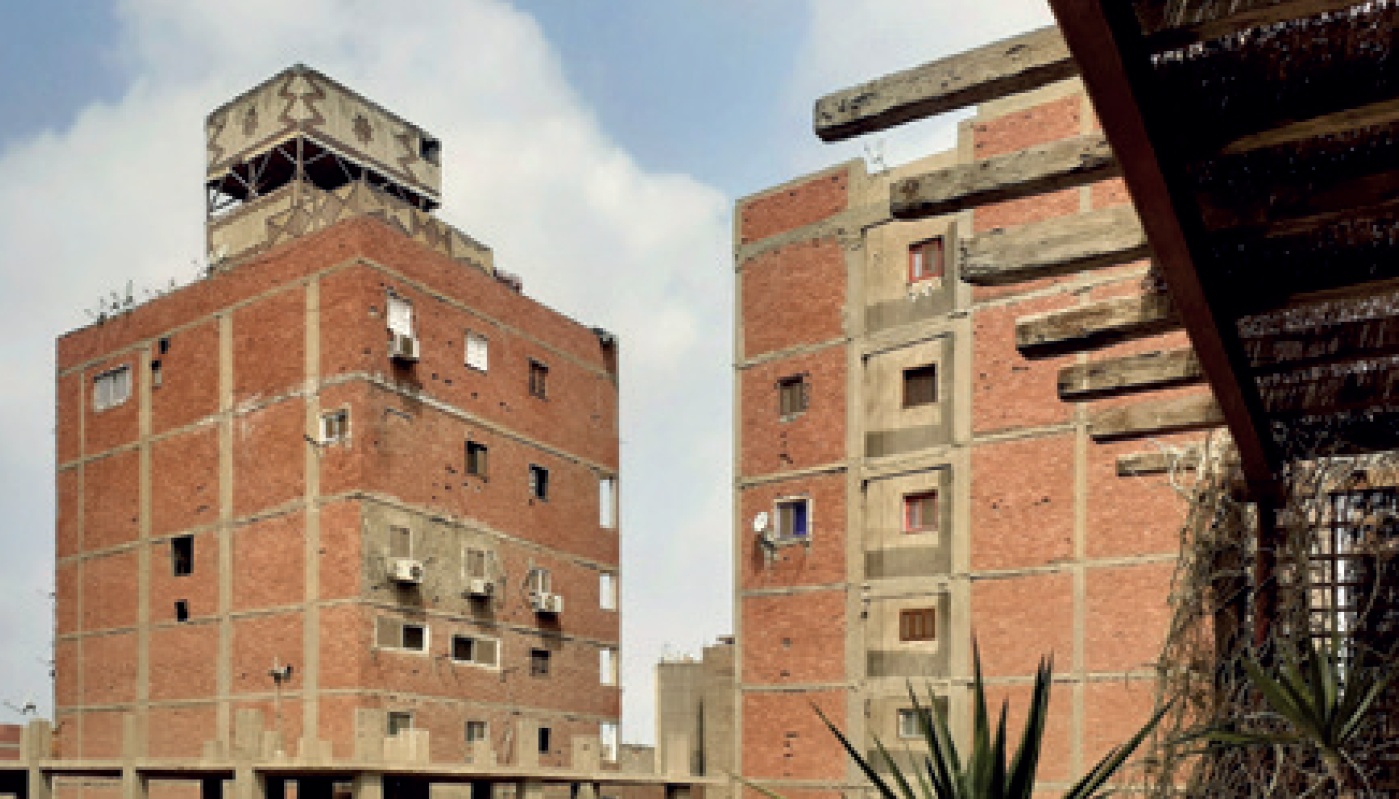Connecting people and places with climate impacts
A project linking National Trust sites with those already experiencing climate extremes aims to explain the need for action to conserve places with climate resilience in mind.

|
| Historic buildings are being lost as more concrete and brick high-rise structures are built. (Photo: Imogen Wood, National Trust). |
In the 1992 legal thriller, A Few Good Men, lawyer Daniel Kaffee (Tom Cruise) cries out in exasperation: ‘It doesn’t matter what I believe! It only matters what I can prove!’
Today it seems it does not even matter what you can prove. Unless you can make your climate data and facts around the rapidity of change, and how it is already affecting our heritage and places, fit on to one snappy PowerPoint slide in a way that holds attention longer than the latest Insta of a nice new rooftop extension, not many people are going to pay such ‘proof’ any mind when planning their next project or development.
So how do we reach the public and professional communities outside the climate and environment bubble in a meaningful way that strips out the science and climate models (‘yawn’); leaves behind the global climate conference battles (‘does it achieve anything anyway?’, people often ask); and overcomes the shortsighted, headline-grabbing policy designed to win green votes, yet make very little difference to the accelerated climate-hazard-filled trajectory we find ourselves on in heritage conservation?
The National Trust has been gathering case studies for over five years on sites affected by climate hazards. We have more than 400 historic properties, 28,000 historic buildings and 250,000 hectares of land which offer a large interface between the natural and historic environment. There we can tell and share stories of climate hazards affecting our places, in a way that reaches people and helps them tune in to the plight of buildings, monuments and landscapes that are ill-designed to face the rainfall, heat and drought trends we are experiencing.
Adapting on a holistic and landscape scale is essential to conservation at our places. So too is the climate mitigation sorely needed and appreciation of the severity of the problem. This is not just for the public awareness and to justify change (in conservation terms) in the face of climate pressures, but also to hold discussions with statutory stakeholders and work together on appropriate, design-led and significance-rooted proposals that preserve assets and setting in context in a way that respects sustainable values. How do we reach people in explaining all this in a meaningful way?
In 2022 I was invited by the International National Trusts Organisation (INTO) to visit Cairo and meet the Egyptian Heritage Rescue Foundation (EHRF) to view the threats to historic buildings across the city. Cairo is subjected to climate change and increases in rainfall and simultaneous pressures of permitted development and demolition. These are rapidly eroding (or certainly changing) the historic city’s sense of place and historic skyline. The change is from one of well-used local materials that cope with the heat, to high-rise concrete and brick towers, largely supported by mechanical cooling. The pace of development in Cairo means that, unless protected as a state-owned monument (such as the Arabic Oud House, where the oud is still taught to students), the historic buildings of the city are being slowly cleared to allow for modern high-rise structures.
The EHRF has worked with the Egyptian government to get a lease on Bayt al-Razzaz, a significant Mamluk building in the city centre. It has already secured funding and carried out changes to the roof profile to cope with the changes in rainfall for a large part of the site. Repairs from funds raised by the charity have enabled it to provide a green space in an otherwise green-poor city; retain traditional skills in the form of woodworking spaces and offices; and run educational tours to learn from craftspeople as part of the sharing of the historic space and skills across the sector. However, funds are short and the wider site, including a cathedral-sized space with painted ceilings, glazed windows and mushrabiiyas (oriel windows enclosed with carved wood latticework), is at risk of being lost due to the increasingly severe rainfall events.
The EHRF noted that every time it rains, it loses another part of the building, on which conservation work is yet to be undertaken. While sustainable repairs and continuing maintenance are an expected part of building conservation, climate change and lack of funding to maintain this area of the building are hastening its deterioration. Some changes to the structure may be needed to cope with rainfall.
Following the learning from this visit, the INTO led a bid with support from the National Trust to the British Council to raise monies for six African and near-east national trusts affected by climate hazards. The aim was to undertake capital expenditure projects directly to adapt monuments, buildings and landscapes to climate hazards already being experienced. The project sought to link our own National Trust sites with those already experiencing climate extremes. It tells this story to our visitors in a way that brings messaging about climate to our supporters without the usual slightly doom-laden slant and in a way that demonstrates how places will see this change in the future.
As a country waking up to the change that is starting to affect our places, this part of the bid includes several National Trust (England, Wales and Northern Ireland) sites being twinned with these international National Trusts’ projects. We shall install several climate storytelling interventions that share issues from these other places, linking them to issues on the National Trust properties. The aim is to raise awareness of climate change and its impacts on places that our members visit and love, and explain how these may need to adapt to reduce impacts, retaining what is special about them. The project also aims to support the global response to climate pressures brought about by our own actions. The interpretative interventions are being developed currently and will go into several National Trust sites throughout 2024.
Climate change adaptation guidance that the National Trust has produced across several topics associated with managing historic and beautiful places, supported by other heritage agencies and charities across the UK, is available at www.into.org/new-national-trustclimate-change-adaptation-guidance. It may not matter what we can prove, but we are seeing change as our operations teams and consultants deal with unprecedented levels of flooding, drought, temperature and land shifts. Our action and inaction do matter: we will be responding further to conserve places more cost effectively and with climate resilience in mind.
This article originally appeared in the Institute of Historic Building Conservation’s (IHBC’s) Context 181, published in September 2024. It was written by Imogen Wood, the senior national consultant for heritage and climate at the National Trust and chair of the West Midlands IHBC. A previous article by Imogen Wood, ‘Value transitions between heritage and nature’, appeared in Context 180, June 2024.
--Institute of Historic Building Conservation
Related articles on Designing Buildings Conservation.
- Climate action: Comfort is a crucial missing piece of the puzzle.
- Climate change and heritage.
- Conservation.
- Conserving our tree heritage in a time of climate crisis.
- Heritage.
- Historic environment.
- IHBC articles.
- IHBC launches climate change hub.
- Institute of Historic Building Conservation.
- Preparing traditional buildings for climate change.
- Value transitions between heritage and nature.
IHBC NewsBlog
Old Sarum fire in listed (& disputed) WW1 Hangar - Wiltshire Council has sought legal advice after fire engulfed a listed First World War hangar that was embroiled in a lengthy planning dispute.
UK Antarctic Heritage Trust launches ‘Virtual Visit’ website area
The Trust calls on people to 'Immerse yourself in our heritage – Making Antarctica Accessible'
Southend Council pledge to force Kursaal owners to maintain building
The Council has pledged to use ‘every tool in the toolbox’ if urgent repairs are not carried out.
HE’s Research Magazine publishes a major study of the heritage of England’s suburbs
The article traces the long evolution of an internal programme to research 200 years of suburban growth
IHBC Context 183 Wellbeing and Heritage published
The issue explores issues at the intersection of heritage and wellbeing.
SAVE celebrates 50 years of campaigning 1975-2025
SAVE Britain’s Heritage has announced events across the country to celebrate bringing new life to remarkable buildings.
IHBC Annual School 2025 - Shrewsbury 12-14 June
Themed Heritage in Context – Value: Plan: Change, join in-person or online.
200th Anniversary Celebration of the Modern Railway Planned
The Stockton & Darlington Railway opened on September 27, 1825.
Competence Framework Launched for Sustainability in the Built Environment
The Construction Industry Council (CIC) and the Edge have jointly published the framework.
Historic England Launches Wellbeing Strategy for Heritage
Whether through visiting, volunteering, learning or creative practice, engaging with heritage can strengthen confidence, resilience, hope and social connections.














